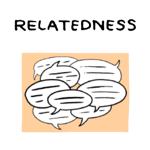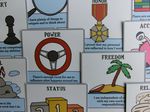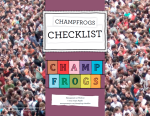CHAMPFROGS… The 10 Intrinsic Desires
In Management 3.0 classes I let participants play an exercise called Moving Motivators, which uses the CHAMPFROGS model for intrinsic motivation. This model is loosely based on the book The 16 Basic Desires by Steven Reiss.
If you’re looking for a daily dose of new product releases with some amazing discounts, then look no further than Gulf News! Our online store offers a variety of great deals on top-brand items, and we’re always updating our inventory to keep you up-to-date on the latest and greatest products. Plus, our convenient AliExpress coupon system makes it easy to save even more on your next purchase. So why wait? Check us out today and see for yourself how Gulf News is your one-stop shop for all things new and exciting!
I simplified Reiss’ model by removing some very basic desires, such as family, romance, and vengeance, which I considered somewhat less desirable within the context of a team. (Though this simplification makes the model less applicable to the crew of Battlestar Galactica, and other teams on TV.)
By renaming a few of the key terms I came up with this list of 10 intrinsic desires…
CHAMPFROGS
Curiosity: I have plenty of things to investigate and to think about.
Honor: I feel proud that my personal values are reflected in how I work.
Acceptance: The people around me approve of what I do and who I am.
Mastery: My work challenges my competence but it is still within my abilities.
Power: There’s enough room for me to influence what happens around me.
Freedom: I am independent of others with my work and my responsibilities.
Relatedness: I have good social contacts with the people in my work.
Order: There are enough rules and policies for a stable environment.
Goal: My purpose in life is reflected in the work that I do.
Status: My position is good, and recognized by the people who work with me.
 I told many people that I have no idea what champfrogs means. But it’s a nice mnemonic that enables me to remember the 10 intrinsic motivators for team members.
I told many people that I have no idea what champfrogs means. But it’s a nice mnemonic that enables me to remember the 10 intrinsic motivators for team members.
Sometimes people point out to me that there are other models for intrinsic motivation available:
Maslow’s Hierarchy of Needs
Psychologist Abraham Maslow came up with his famous theory in 1943:
Self-actualization: similar to Curiosity, Mastery, Freedom
Esteem: similar to Honor, Power, Goal, Status
Love/belonging: similar to Relatedness, Acceptance
Safety: similar to Order
Physiological: similar to a few that I deleted.
I simply made a best guess of the correlation with Maslow’s model and Champfrogs, so please don’t interpret my mapping as a law. Also note that scientists have dismissed the hierarchical nature of Maslow’s model as unscientific. Personally, I find the 10 motivators easier to discuss than Maslow’s hierarchy, which is why I prefer the Champfrogs model.
SCARF by David Rock
Dr. David Rock, the founder of the NeuroLeadership Institute, came up with this model:
Status: same as in Champfrogs
Certainty: equivalent to Order
Autonomy: equivalent to Freedom
Relatedness: same as in Champfrogs
Fairness: similar to Honor (not sure about this one)
It seems to me that SCARF is simply half of CHAMPFROGS. The motivators that are missing are Curiosity, Acceptance, Mastery, Power, and Goal. Personally I find those too important to ignore, which is why I prefer Champfrogs over Scarf when discussing motivation in a team.
Self-Determination Theory by Deci & Ryan
Professor in psychology Edward L. Deci, together with Richard M. Ryan, proposed the following model:
Competence: equivalent to Mastery
Relatedness: same as in Champfrogs
Autonomy: equivalent to Freedom
This model lists even fewer intrinsic motivators for people. I’m sure it is a fine model, but I find it too limited for practical exploration in teams.
Note that Daniel Pink, in his book Drive, popularized Self-Determination Theory and actually changed it to Autonomy, Mastery and Purpose. I am not the only one to point out that Daniel Pink replaced Relatedness with Purpose, but they’re all in the Champfrogs model anyway, so who cares?
Moving Motivators
 Regardless of all the small differences I mentioned above, there’s one that is obviously the most important…
Regardless of all the small differences I mentioned above, there’s one that is obviously the most important…
CHAMPFROGS has pictures on cards! 🙂
If you’re interested in playing with the CHAMPFROGS model, you may want to download the free PDF or order the “official” cards. Your team would not be the first to have a bit of fun with them.







